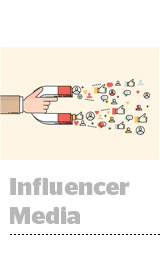 Publishers are learning to love influencer marketing as a way to grow broader advertising and sponsorship deals.
Publishers are learning to love influencer marketing as a way to grow broader advertising and sponsorship deals.
“An advertiser might come with a traditional sponsorship package, and to complement that, they want a programmatic component,” said Rachel Parkin, SVP of strategy and sales at digital media company CafeMedia.
CafeMedia owns a network of women’s interest publications, and on Thursday, it revealed a partnership with influencer marketing platform ROI Influencer Media, in order to find social media influencers and turn them into programmatic audience segments and lookalike models.
“Brand programmatic buyers have always appreciated the power of influencers,” Parkin said.
Brands increasingly want to tap into the relationships that publications have with influencers, said Regina Buckley, SVP of digital business development at Time Inc. Last week, Time partnered with influencer management platform Speakr to launch Connect, a community of influencers with editorial connections to the publisher.
So sponsored content written for Time’s women’s interest magazine “Real Simple” could be amplified by Time’s in-category influencers, via Connect.
Time also collects data on how its readers and logged-in subscribers interact with Connect influencers, Buckley said. “And we are building products that are able to capitalize on this.”
Both CafeMedia and Time also want to use their influencer-generated audience segments to do lookalike modeling off-property.
“Once you have the content created on social and audiences there you’ve connected with, it’s easier for that brand to go about reaching followers and lookalike audiences through more traditional desktop or mobile ads,” said ROI Influencer CEO Seth Kean.
Even a year or two ago, influencer marketing was thought of as “paying someone to post something and then counting the likes and engagement,” said Kean. “Now it’s about crafting audiences and amplifying content.”













